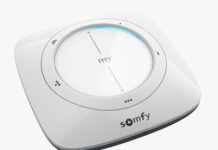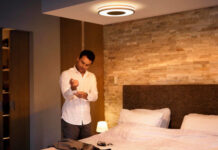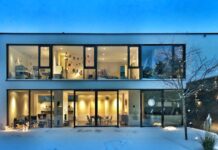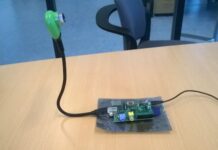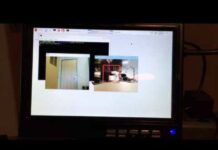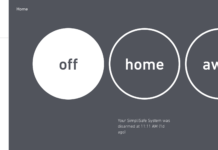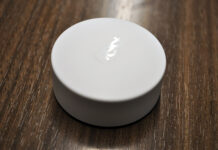There are now 42 million connected US homes with fully 1 in 5 adults using a smart speaker.
Smart lighting is one of the most common entry points for anyone starting down the home automation route. How can this type of smart lighting can be used in the workplace?
We’ll take a look today at how smart lighting affects mental health in the workplace. This is an issue of equal interest to workers and employers.
Why Is Lighting Important In The Workplace?
The working landscape today is more competitive than ever before.
With so much expected of employees, health and well-being in the workplace remain in the spotlight.
City University London conducted a study on Lighting, Well-Being and Performance at Work with some interesting findings.
While this review suggested that lighting in isolation is “unlikely to have a strong effect on performance”, it goes on to add that lighting is indeed one of several key factors that help to “create healthy working environments” promoting both “well-being and productivity.”
Further, the review points to growing evidence linking “lighting conditions, shift-work and biological health conditions”.
The review’s recommendation is that companies should invest in personalized workplace lighting to “support well-being and performance.”
Back to the 1920s: The Hawthorne Studies
Why are we catapulting back in time 100 years?
Bear with us. It will make sense…
Researchers looking at on performance in the workplace back in the 1920s believed that optimizing environmental factors always led to improved performance and work rate.
Elton Mayo from the Harvard Business School first tested these ideas with a focus on lighting, humidity, and temperature. The Hawthorne Studies ran for over 15 years observing 20,000 subjects in the workplace.
The most salient finding of these studies, termed the Hawthorne Effect, showed that performance always increased no matter how variables were manipulated by researchers. Lights up or down led to greater productivity. The same happened with temperature and humidity. The conclusion was that workers responded to the attention they received and this is very important when considering the effect of smart lighting on mental health today…
Although these studies did not find a direct relationship between lighting and performance, they demonstrated that paying attention to the needs of employees could ultimately improve productivity.
The Human Relations Movement was established in the wake of these studies and remains influential today. Their approach to workplace design places a strong emphasis on the overall environment being key to both performance and well-being.
So, while these studies perhaps meant less research was conducted concerning how lighting impacts performance, this was ultimately a positive for workers and employers alike. Research was slanted toward how workplace performance could be enhanced through the well-being of workers. You, the worker, can remain in better shape and happier at work while your employer will ultimately gain in terms of increased output: a true win-win.
So, tweaking environmental factors will not directly bring about better performance but an improved working backdrop can definitely bring about happier, healthier employees.
Why is this the case with regard to lighting in particular?
How Lighting Affects Mood
With the US Environmental Protective Agency stating that people spend roughly 90% of their time indoors, by definition this leaves precious little time for exposure to natural light.
Your circadian rhythm – that’s your internal body clock – tells you when to wake and sleep and is influenced by the sun. Since you spend most of your time under artificial lighting, when this is too dim during the day, it can lead to troughs in energy.
There’s another knock-on effect from poor lighting during the day…
Brighter days and darker nights can help you to sleep better, and avoid fatigue and other stressors and health problems collectively known as social jetlag. Social jetlag can play a part in triggering a range of conditions from depression and obesity through to addictive behaviors and health issues like diabetes.
In the worst scenario, limited access to natural light can be a factor in seasonal affective disorder, a form of depression. Treatment often involves exposure to bright artificial light up to 20 times brighter than most indoor lighting.
Just 15 minutes of exposure to natural light helps your brain to release endorphins, hormones linked to mood.
Poor lighting affects moods
Poor quality lighting in the workplace not only affects mood, but it’s also associated with both stress and anxiety. Physically, bad lighting can trigger eye strain and headaches while imparting a general sense of fatigue and lethargy. Roll all these possible consequences of inadequate lighting together, and the picture for employee’s mental health is as dim as that artificial lighting.
When the Harvard Business Review reported that in a survey by Future Workplace, American employees polled about workplace attributes placed “access to natural light” along with “view of the outdoors” above all other perks. 47% of those same workers suggested a lack of natural light at work made them feel sluggish with 43% claiming they felt “gloomy.”
A Michigan State University animal study found that spending too much time in dimly lit environments at work could make learning and remembering harder. This study went so far as to say that changes in environment light could lead to structural changes in the brain.
There’s a very broad spread of further research, all of which backs up the link between poor lighting and mental well-being, but how about a solution?
From Fluorescent Lighting to LEDs
Many offices still use those old fluorescent lights because they’re cheaper and last longer. If you’re an employer, you might want to rethink this strategy.
Early versions of this type of lighting emitted too much blue-green light much like the light that comes from computers and cell phones. This can induce headaches and eye strain. While modern fluorescent lighting has gone some way to lessening this, the problem still exists.
While investing in smart lighting might seem like an unnecessary expense to some employers, it’s actually an investment with enormous potential returns. By making your workers happier and healthier, productivity can spike while operational costs diminish. Suddenly, new smart lighting throughout the workplace can seem remarkably cheap.
With the advance of LED lighting, running costs have come right down. Reduced energy and maintenance costs with LEDs can save you as much as 50% annually. Programmable smart lighting can also help you cut costs further, especially when combined with motion sensors to eliminate the illumination of unoccupied areas.
LED Lights
LED lights emit light in a targeted direction. This removes the need for diffusers and deflectors and increases efficiency. You’ll get none of that disturbing flickering associated with fluorescent strip lighting, no UV emissions, no toxic substances.
So, LED lighting is undoubtedly better but it’s still far from a perfect solution.
Why is that?
Unfortunately, most lighting solutions on the market don’t take into account the eye’s non-visual photoreceptors. These are responsible for basic biological functions and were only discovered in 2001 by American scientist GC Brainard.
This relatively recent discovery explains why much lighting does not factor this element into the equation. Why is this important, though?
Well, the receptor responds most fully to sky blue wavelengths of light. The receptor sends signals to your internal body clock and many lighting providers are not allowing for this in the design of LEDs.
An advance in technology going some way to meet this issue head-on is a much more personalized form of lighting…
Biodynamic Lighting: The Personal Touch
Biodynamic lighting or human-centric lighting (HCL) is based on the discovery of that third receptor in the eye we just mentioned.
This sensor in the eye regulates the production of melatonin and cortisone, registers light, and controls the biological effect on the body.
HCL is a lighting concept that emulates the natural course of daylight based on the circadian rhythms of the human body. This is achieved by matching up brightness, light color, dynamics and gradient. With LEDs and digital control, these levels can be easily tweaked over the course of the day.
By using this type of lighting, workplaces can provide the next best thing to natural light leading to a healthier and happier workforce. Settings can be adjusted to alter both color temperature and luminance. As an example, cold white light is perfect in the morning while dialing the color temperature back from 12,000 Kelvin to 6000 Kelvin and ramping the brightness up is ideal for focused work.
Bayer installed HCL at their headquarters in Basel. Free-standing luminaries in tandem with visual timing light serve up biodynamic lighting in all areas of the building from workspaces and communication hubs to cafeterias and meeting rooms. While not every company has the budget of this global giant, they’re setting a strong example for how judicious use of smart lighting can drive productivity through happier, healthier workers.
How To Improve Workplace Lighting
Here are some simple methods for any workplace to improve lighting conditions to round out.
If you’re thinking about the well-being of your workers as well as your own bottom line, these basic pointers are worth pondering…
- Install LEDs: By ditching those antiquated fluorescent lights and opting for LEDs, you’ll not only slash energy and maintenance costs but also help your employees feel happier. The benefit to you is increased productivity as well as a healthier workforce
- Incorporate Natural Lighting: Since the most effective artificial lighting attempts to mimic daylight, it makes sense to get as much natural light as possible into your offices. Sure, installing floor-to-ceiling windows or creating an atrium might sound frighteningly expensive. When you consider the energy costs of artificial lighting and the improvement in productivity you could reap, though, this investment might be the smartest one you make all year
- Add Colorful Lamps: Popping colored lamps on desks gives workers a degree of control and the ability to customize lighting in their space just the way they like it
- Use Task Lighting: Overhead lighting is not the most efficient solution without a helping hand from task lighting. These lamps direct light exactly where it’s needed without using too much energy so they’re great for productivity and the environment
- Biodynamic Lighting: If your company has a more fluid budget, it’s well worth looking into biodynamic lighting for a completely customizable approach to smart lighting in the workplace with many advantages for you and your workers alike
Final Word
The way poor lighting brings down mood, energy levels, and productivity has been conclusively established.
Smart lighting in workplaces, particularly when this takes on the personalized touch of biodynamic lighting, has many advantages. Not only will you feel more valued by your employer, you’ll also feel more sprightly and energetic. This will lead to getting more done at work in less time while feeling significantly better. Everyone’s a winner with smart lighting in the workplace!
We update our home automation blog daily Monday through Friday. On Saturdays we give you a weekly round-up in case you missed anything so come back soon!
The post Smart Lighting and How it Affects Mental Health in The Workplace appeared first on Smarthome Blog.

